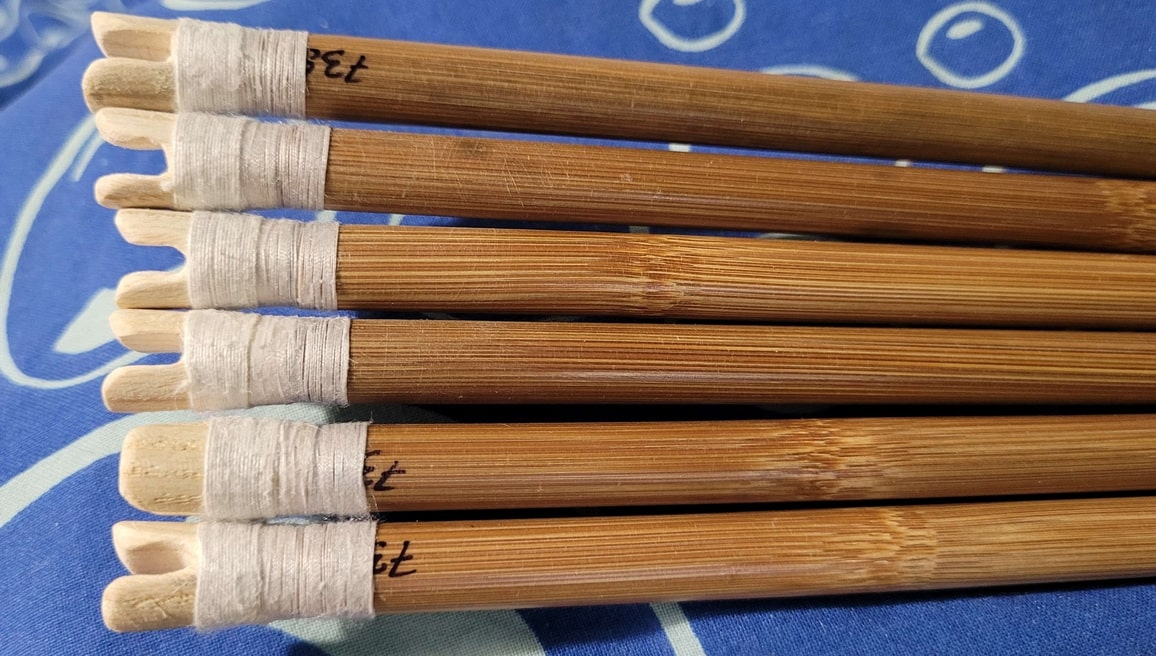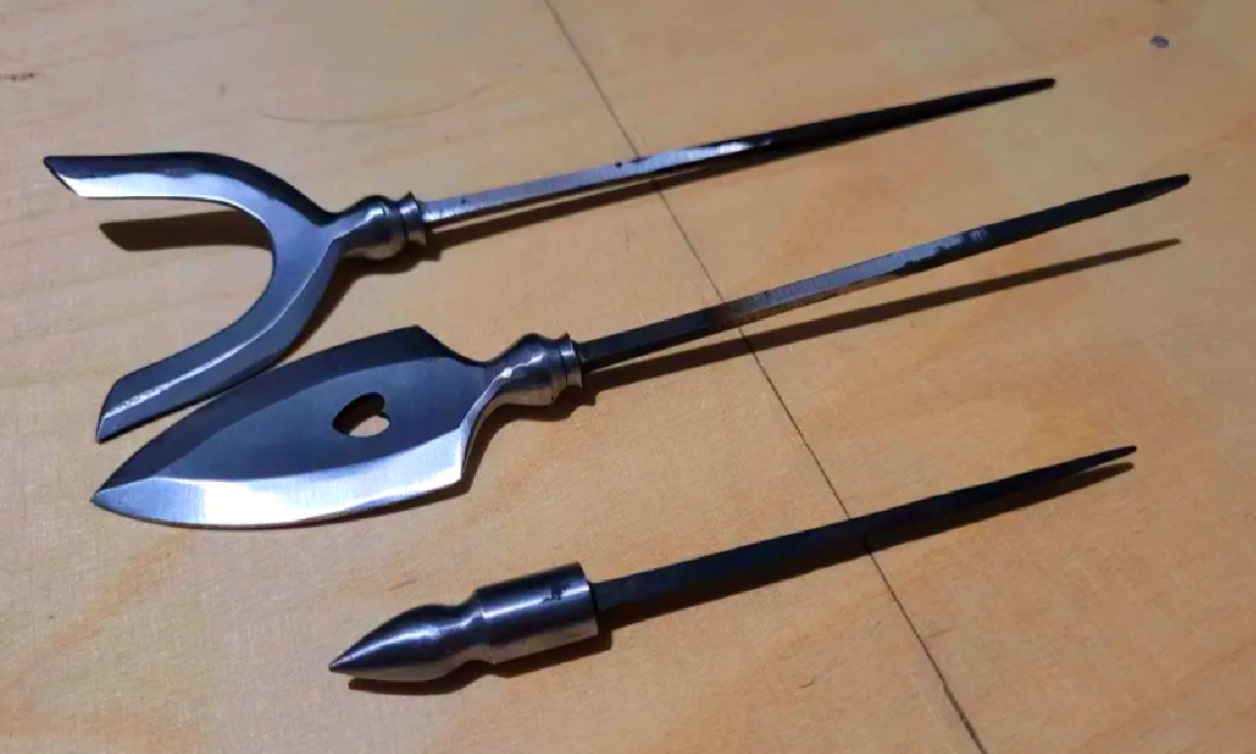This page is not completely finished yet! There is still so much to say.
Materials and which to use
The 3 most commonly used materials are Carbon, Wood and Bamboo.
Many other materials like aluminium exist but they are for the most part niche, at least today.
None of these materials is inherently *the best*, but they do have different properties and thus the ideal choice depends on what you need from the arrow.
Carbon is light ( making it particularly ideal for low weight bows ), modular and widely available. Carbon arrows are exceptionally easy to modify, they function like legos.
The nock? Just pluck it out. The tip? Screws in. They are available in almost every store. Finding shafts longer than 32" however can be a challenge, especially at higher weights. Carbon arrows are primarily made for modern archers, so they tend to be manufactured shorter to fit their small draws.
Bamboo for the same stiffness is light like carbon except natural! But it is less widely available and less modular. The nock has to be glued in or made into the shaft itself, the tips also are glue-ins. That being said, because the shafts are semi-hollow, using tanged arrowheads is exceptionally easy with bamboo shafts.
Wood is dense which makes it a poor choice for light bows, but it is good if you need a lot of weight. At light weights if the shaft is the right stiffness, it's too heavy. If it's the right weight, it's too weak. You cannot win! This weight however can be useful if you're using a bow that needs heavy arrows like a manchu bow or if you're just shooting heavy weights in general.
My personal favourite choice is bamboo. With heavy bows I can just use a heavier tip to get the same mass as wooden shafts, except that the center of mass will be
closer to the tip. This makes it correct itself in flight faster and be less prone to archer's paradox. For your first arrows I would still recommend carbon though due to how easy it is to get.
Putting it all together
This is less of a tutorial and more like just a rough overview with a loooot of missing info. It's highly recommended that for heavy bows the nock is reinforced with thread or sinew.
It's highly recommended that for heavy bows the nock is reinforced with thread or sinew. This makes it less likely that the string splits the nock in half. A lot of force is necessary to be used when binding.
 I also like to use rayskin as a draw length marker.
I also like to use rayskin as a draw length marker. The tips are bound in the same fashion and I like to paint both of them over and then lacquer them for durability. Some parts of the shaft can also be painted for decoration. Here are some arrows that are drying before fletching:

These arrows are quite large, the draw length marker is at 34" and they weigh around 1000 grains. (not grams)
What parts make up an arrow?
Aside from the shaft itself, most important areas are the Nock, Tip and Fletchings.
The nock is the tail end, the groove where the string sits. On carbon arrows the nock is usually a piece of plastic that is pushed into the shaft and is held by friction. Natural material shafts can have the nock glued on as a separate wood, horn/bone or plastic piece, or it can be made into the shaft itself. That kind of nock is known as a self nock.
Self nocks may require reinforcing with thread or sinew.
The fletchings are feathers near the tail of the arrow, but beware that
some modern arrows have solid plastic fletchings that are less suitable for historical use. The fletchings are generally glued on using a jig but can also be done by hand if you don't value your time at all.
The tip on most arrows is a 'target tip' that is designed to do less damage to the target. Hunting & war tips are not recommended for target use. On carbon arrows the tips simply screw into the metal insert, on natural material arrows the tip is either glued on top of the shaft or glued inside the shaft with a 'tang'. Tanged heads are more durable, were preferred historically in the east but they cost a lot more.





